The Article
AUDIO-TECHNICA AT-LP3 TURNTABLE: A FAMILIAR FACE?
30th July 2017
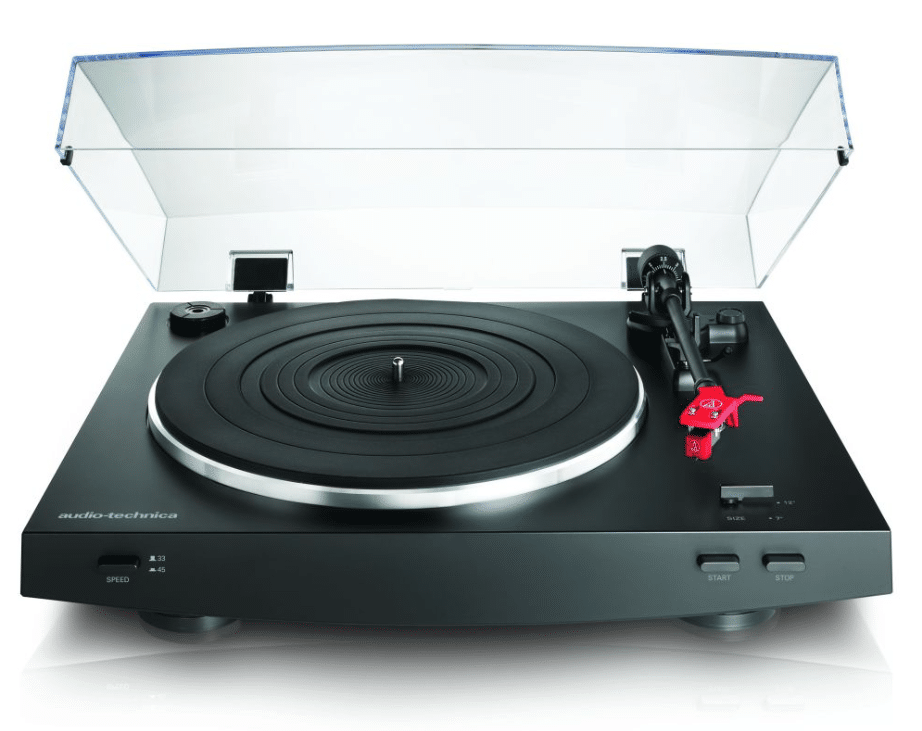
Looking for a sub-budget turntable offering automatic play? Paul Rigby might have the very thing for you as you reviews the Audio-Technica AT-LP3
There is a steady stream of very (very) low cost turntables hitting the market. Many of them are sold via colour supplements and the window displays of High Street music shops such as (and God forgive them for their sins) HMV. They include a host of brand names such as Crosley, Ion, GPO plus other, equally dodgy, monickers that ‘do a Bose’. That is, they invest a far higher percentage of the product budget on marketing and aesthetics than actual sonic qualities of their products. All of these products threaten to damage your vinyl, principally because of poor build quality. Unlike many journalists out there, I’ve actually reviewed one or two of them, so I know the horror first hand.
There is another band of turntables out there that hold a higher asking price but that still retain a value for money position, pricing their decks at below the standard budget limit (and by that I would suggest that figure being below £200). These ‘sub-budget’ turntables are variable in quality. I’ve reviewed two of them so far: the Dual MTR-75, which was a bit of a mixed bag in terms of build and sonic qualities as well as the Lenco L-3808, which I found to be superb in terms of sound quality from its direct drive. All of these products are built in China, it’s currently the only way to keep costs down below the £200 mark.
This new turntable from Audio-Technica is of the same breed, also built in China and just qualifies for sub-budget status by a single pound.
The belt-driven, two-speed, LP3 is a full automatic turntable, meaning that you can operate the deck without having to touch the arm during play.
The turntable arrives with an AT91R cartridge (set at a 2g downforce) plus lightweight aluminium alloy tube cantilever (a replacement stylus will cost £18), within an attractively red, SME-type, AT-HS3 removable head shell featuring a built-in finger lift. The cartridge is fitted with a conical stylus which means that detail extraction will be compromised a touch from the off. Anyone buying this turntable will be recommended to buy a replacement with an elliptical stylus for an enhanced performance. The cartridge is fitted to a straight tonearm that features a rest for the tonearm but no safety catch in case of accidental knocks. A poor design decision because beginners can be a little clumsy.
The turntable features a built-in phono amplifier. Any phono amplifier is essential to amplify the tiny signals produced by the cartridge. A basic hi-fi amplifier can’t handle the job and so the specialist phono amplifier is asked to complete the task. Once the phono amplifier produces a louder signal, it then passes that to the main amplifier.
A built-in model can be useful for three reasons. Firstly, not all integrated amplifiers include a phono amplifier. In this scenario, you would have to buy one so Audio Technica save you the job in this case. Next, not everyone wants to use a standard hi-fi set-up. With this turntable, you can easily plug the turntable into powered speakers (that includes the amplifier actually within the speaker cabinets). This configuration is ideal for those lacking in space. Lastly, of course, the giveaway phono amplifier is great for those on a very tight budget.
Of course, the Audio Technica phono amplifier is part of the build budget for this turntable and, hence, will be limited in terms of sonic quality. As soon as you can buy yourself a separate, external unit, do so. Internally fitted phono amplifiers also produce electrical noise which hampers sound quality. External models don’t infect a turntable in the same way.
As well as a hinged lid, this turntable also includes a separate switch to allow the operation of a moving magnet cartridge or moving coil cartridge within the turntable. Moving Magnet cartridges are normally cheaper and (there are exceptions) simpler in terms of technology and build. The supplied AT91R is Moving Magnet, for example. Moving Coil cartridges are normally found in relatively high end turntables and are far more expensive to buy (you can buy low cost variants but models actually worth purchasing cost around £250 and upwards). These sensitive cartridges demand high tolerances from their host turntables to be able to perform at their designed level so why on earth this option has been provided within this particular sub-budget turntable is anyone’s guess and confuses the hell out of me. Any user of this turntable should only use a Moving Magnet. Avoid using any and all Moving Coils in the LP3. Such a cartridge will work, if you’re stubborn enough to want to try, but you will not hear the benefits and, even if you do hear some improvements, then the majority of those benefits will be lost to the LP3. Hence, purchasing an MC cartridge for the LP3 doesn’t make economic sense.
Other features include a damped arm lift, die cast aluminium platter, 4.5mm rubber platter mat and an all in weight of 5.2kg.
The front of the plinth provides the On and Off buttons plus Power button. On top of the plinth is the 7” and 12” disc selector for the automatic operation. Around the back is the MM/MC switch, phono or line switch plus RCA sockets and a figure of eight power chord plugging to the built-in power supply. The power block is fitted to the plinth underside. Not a great place, I have to admit, as vibrations from it will infect the delicate cartridge, hampering sound quality.
OK, ok, I’ve delayed the unmasking until now but those of you with eagle eyes will have formed a double take when looking at the LP3 because it is almost exactly like the Dual MTR-75. In fact, the only differences are the cartridge, restyled control buttons on the front, no USB port (as seen on the Dual) and the inclusion of that dreaded MC/MM switch instead along with a slightly different platter mat. The overall build quality feels similarly plastic-like but the Audio Technica has a rather more solid feel to it. It’s actually a lot heavier than the Dual by over 1kg. Audio Technica does report that its turntable features extra damping and so I assume that it is the reason for the extra weight.
SOUND QUALITY
I began by playing the Connie Francis original pressing Sings Bacharach and David (MGM) from 1968. The lady herself sings in front of a full orchestra.
I began the test with the LP3 pushing music through its internal phono amplifier. This configuration is ok and perfectly usable and, as such, will get any analogue fan underway in terms of playing vinyl. In critical terms, though, sound was a little indistinct and muffled at the bottom end with a rolled off suite of upper frequencies that hampered detail. As a money saving option, the built-in unit is acceptable and will produce an admirable sound for the price but an upgrade to an external unit is top priority.
Moving on in such a configuration, using an external phono amp and beginning with the lead vocal, despite a bright tone that hung around the various crescendos, Francis did provide lots of energy and vigour and a sense of passion in terms of her delivery. The treble-infused cymbal taps that sat right next to her in the centre of the stereo image were similar unfocused, providing smearing to the upper frequencies. That said, the cymbals were big and bold and were never masked by other frequencies, Audio Technica’s damping application may have helped here.
Although the brass section wasn’t the smoothest I’ve ever heard and strings never really flowed as they should, the orchestra did offer a grand and rather epic staging that provided Francis with a large canvas to paint her words.
The piano was similarly lacking in precision but did offer a sense of musicality. It was always interesting and leant an added atmosphere to the music.
Bass, meanwhile was rather blurry and boomy but it could have been a lot worse. The above-mentioned damping did help in terms of stability which provided a measure of lower frequency control, driving the song steadily along.
Next was a more contemporary pressing and the high energy sounds of Die Werkpiloten via Germany’s Vinyl on Demand label from 2012.
Via this high energy, drum-centric song, the blooming bass and smearing midrange held slightly less sway and importance. The evident musicality of the LP3 rose to a prominence here, allowing the ear to just enjoy the performance and the passion behind the presentation. Yes, the bass guitar was a little masked within the mix and some of the shy synth lines were not picked out particularly but the overall nature of the music was one of emotion and spirit. This was particularly noted from the lead vocal. OK, his voice lacked a sense of subtly and texture but he did throw himself into the song with a robust sense of vitality.
CONCLUSION
Although there are sonic issues, this low cost turntable provides a wealth of features and, in sub-budget terms, is put together fairly well. The Moving Coil option is a puzzle and there’s no USB option but the automatic play system works perfectly every time and the internal phono amplifier could be a life saver to those users on a budget. More importantly, it’s a valid and recommended choice when you compare it to the Crosleys and Ions of this world. For any beginner to the world of vinyl, the Audio Technica AT-LP3 is a steady front end for any sub-budget hi-fi system.
AUDIO-TECHNICA AT-LP3 TURNTABLE
Price: £199
Website: eu.audio-technica.com
TO BUY CLICK BELOW:
USA – https://amzn.to/3kLtU9o
EUROPE – https://amzn.to/324YaF2
GOOD: automatic play, easy to use, free phono amp, value for money, musicality
BAD: no tonearm safety latch, pointless moving coil option, bright upper mids, smeary treble. bass lacks detail
RATING: 6
REFERENCE
Lenco L-3808 turntable
Trichord Dino phono amplifier
Rega Brio-R amplifier
Spendor S3/5R speakers
Tellurium Q cabling
Harmonic Resolution Systems Noise Reduction Components
All vinyl was cleaned using an Audio Desk’s Ultrasonic Pro Vinyl Cleaner

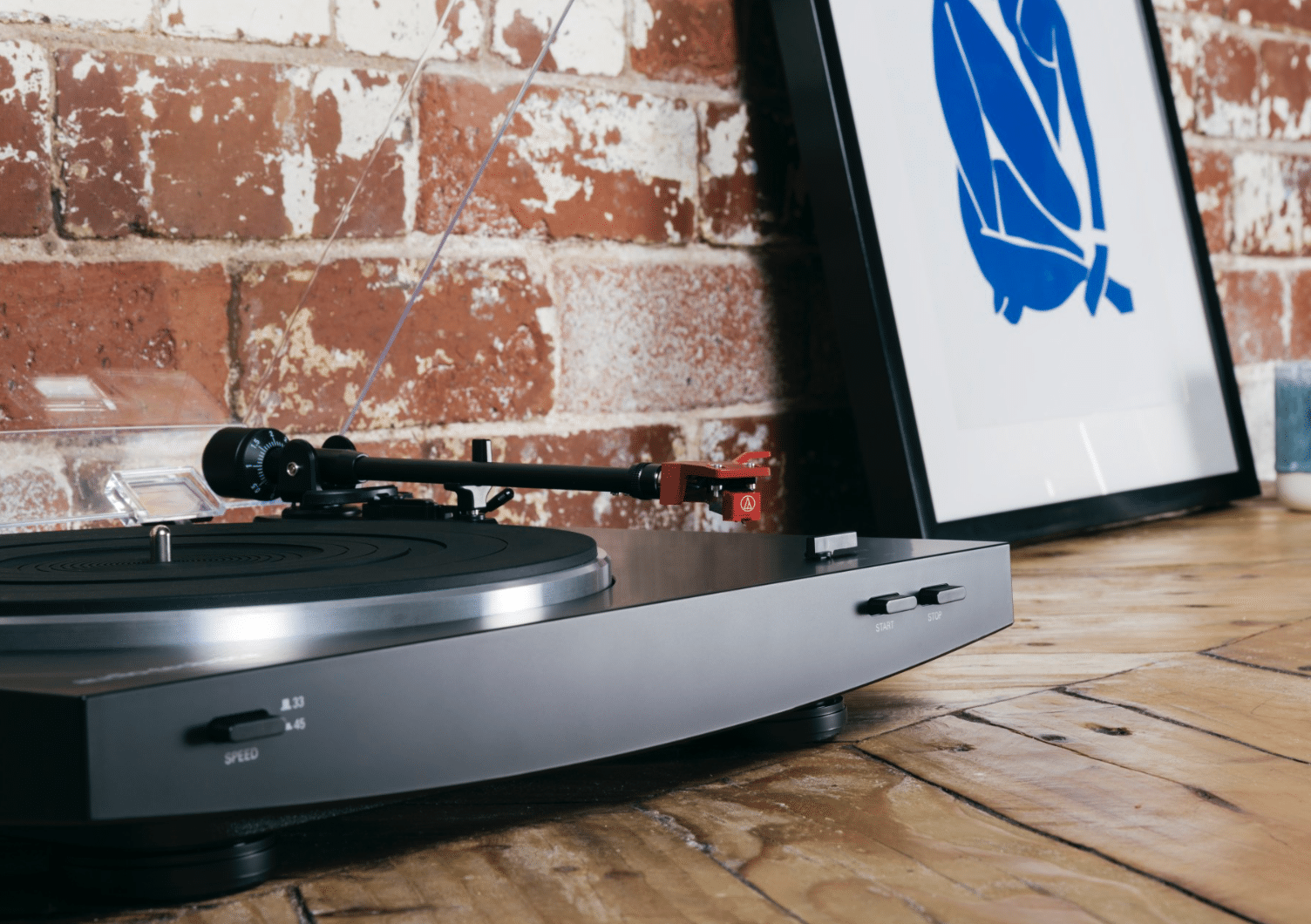
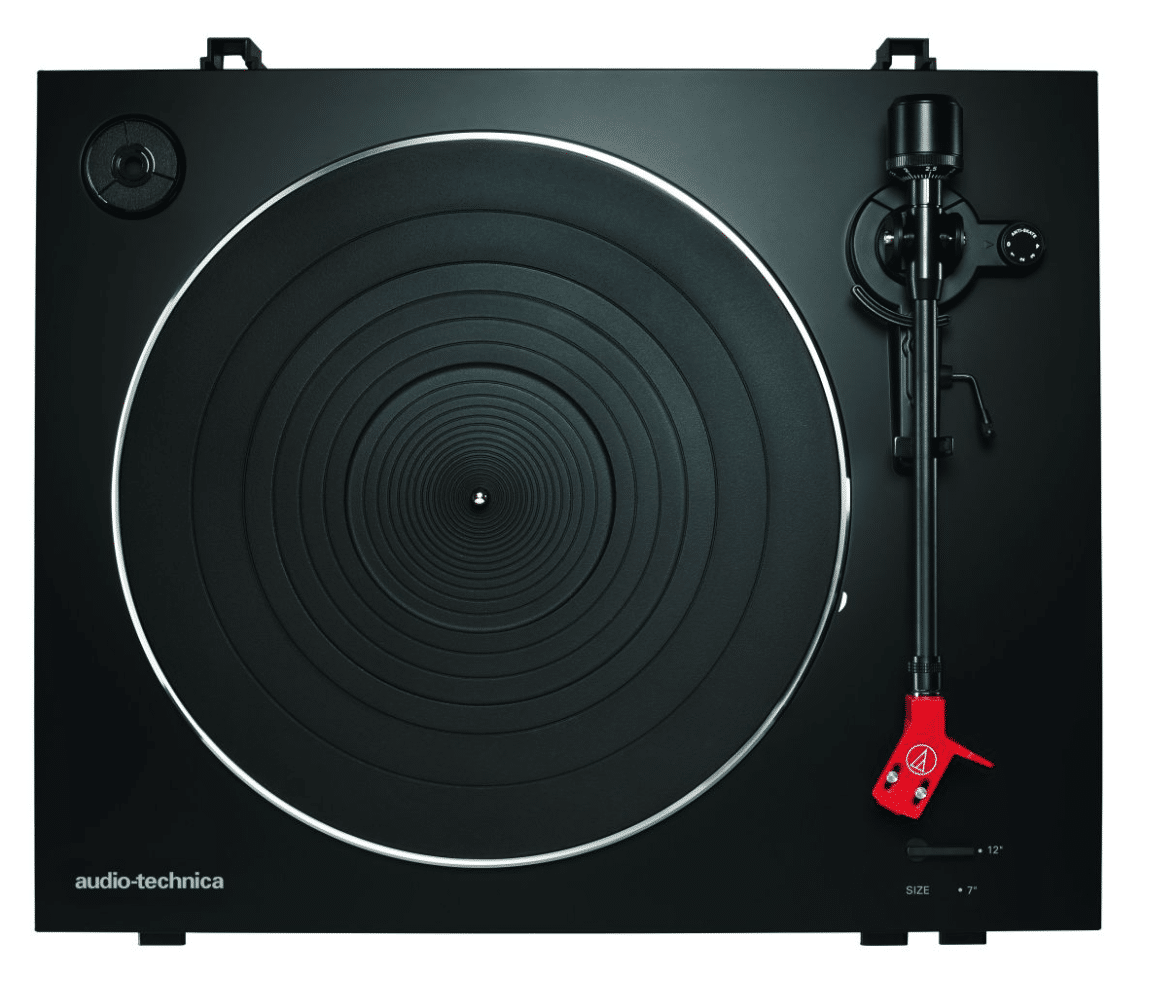
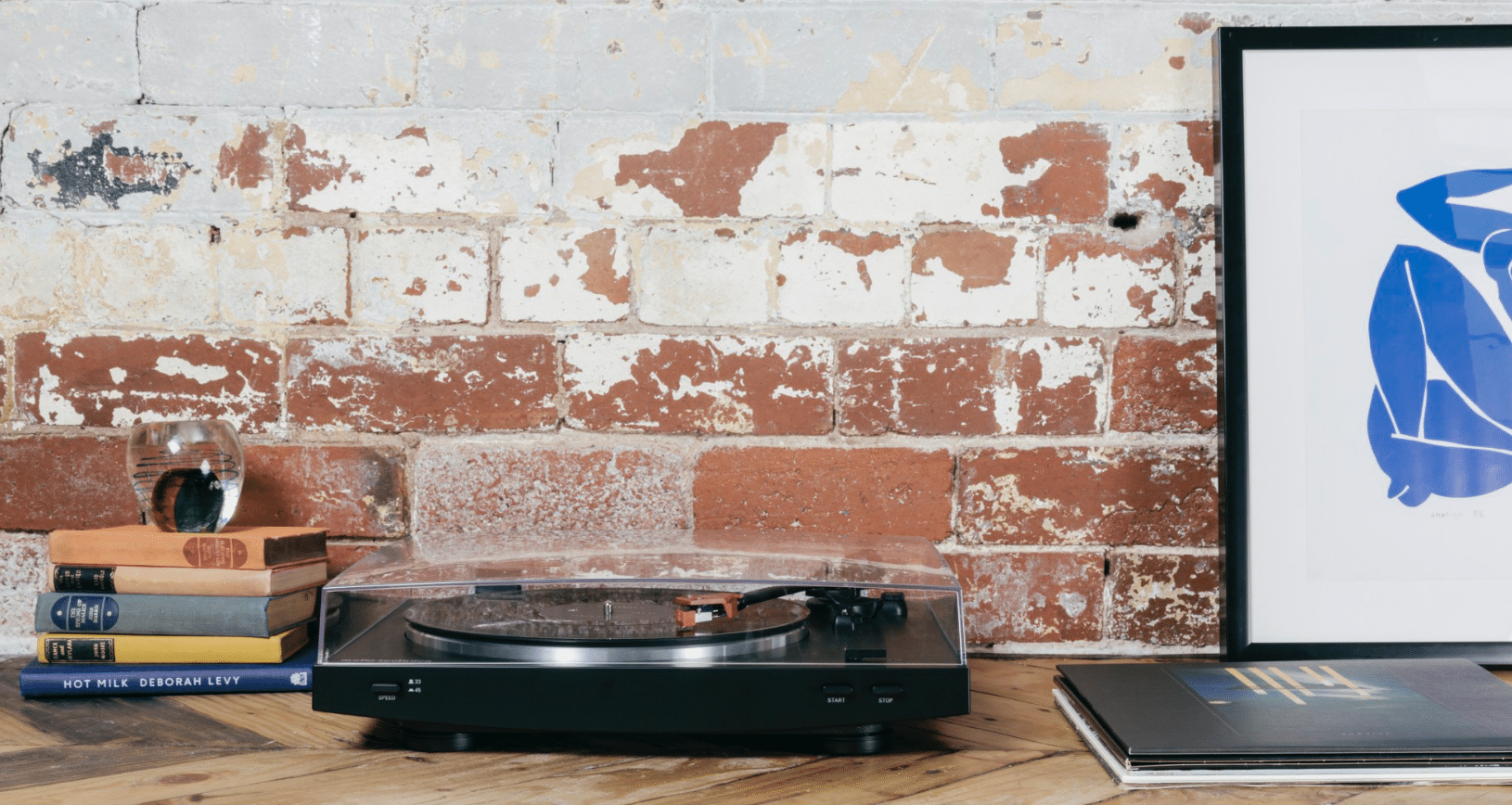
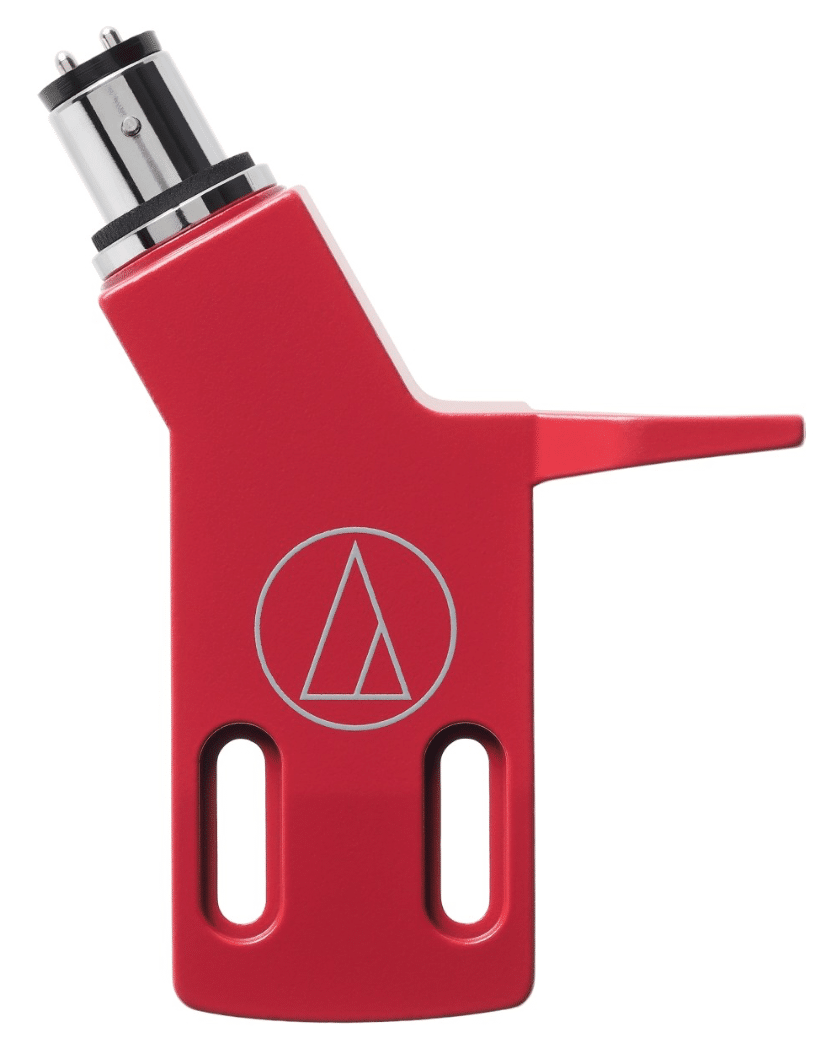
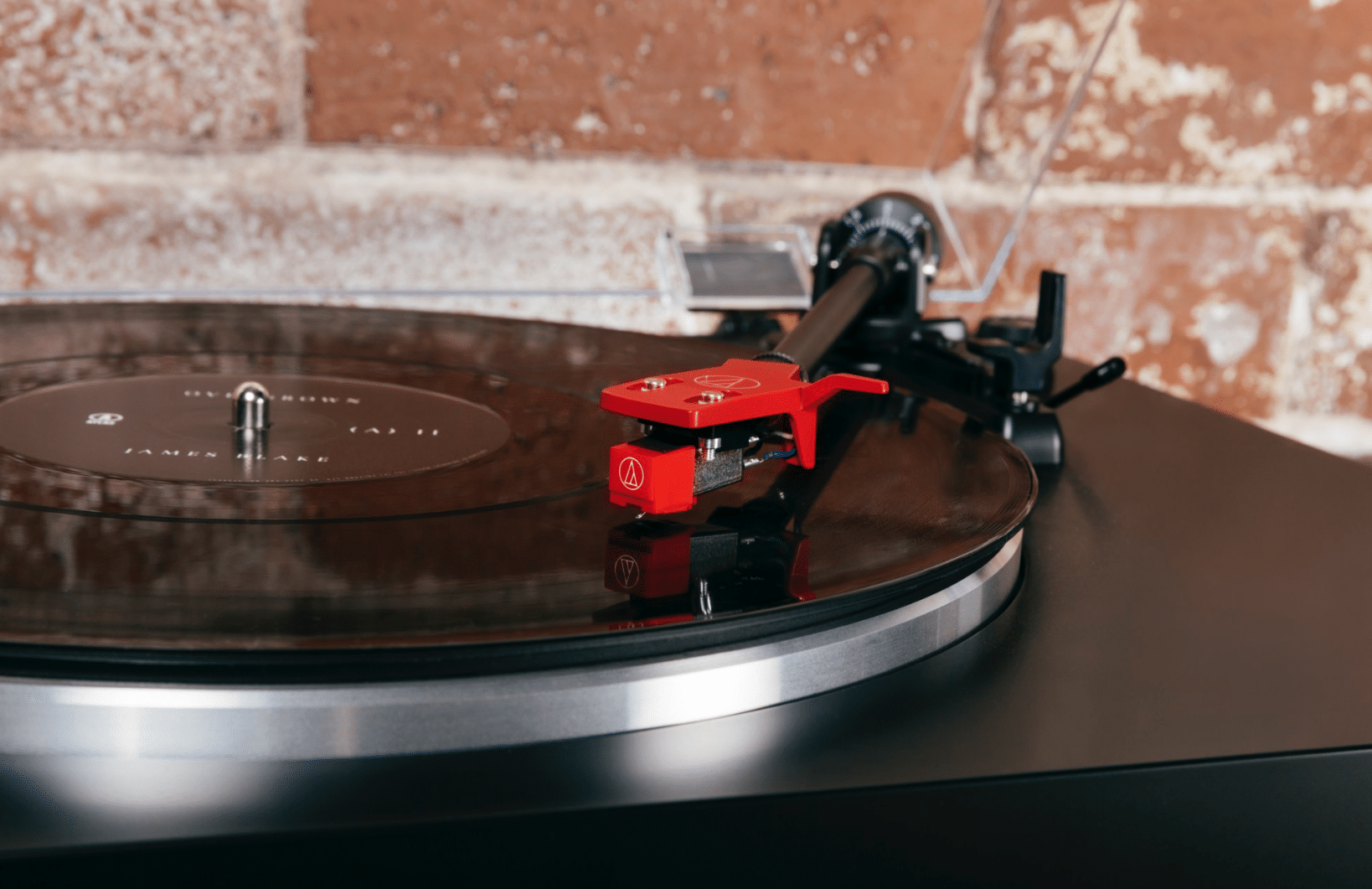
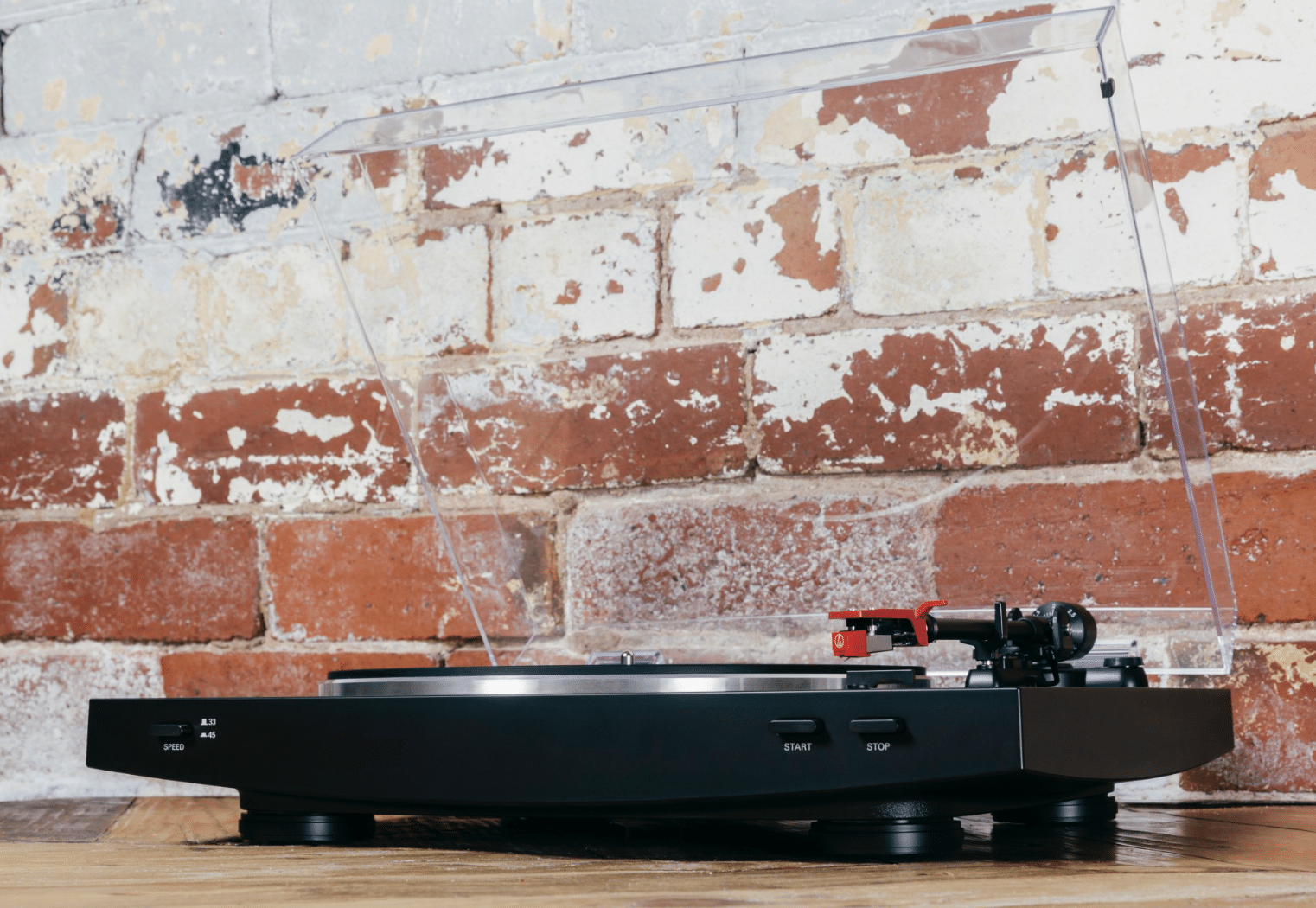
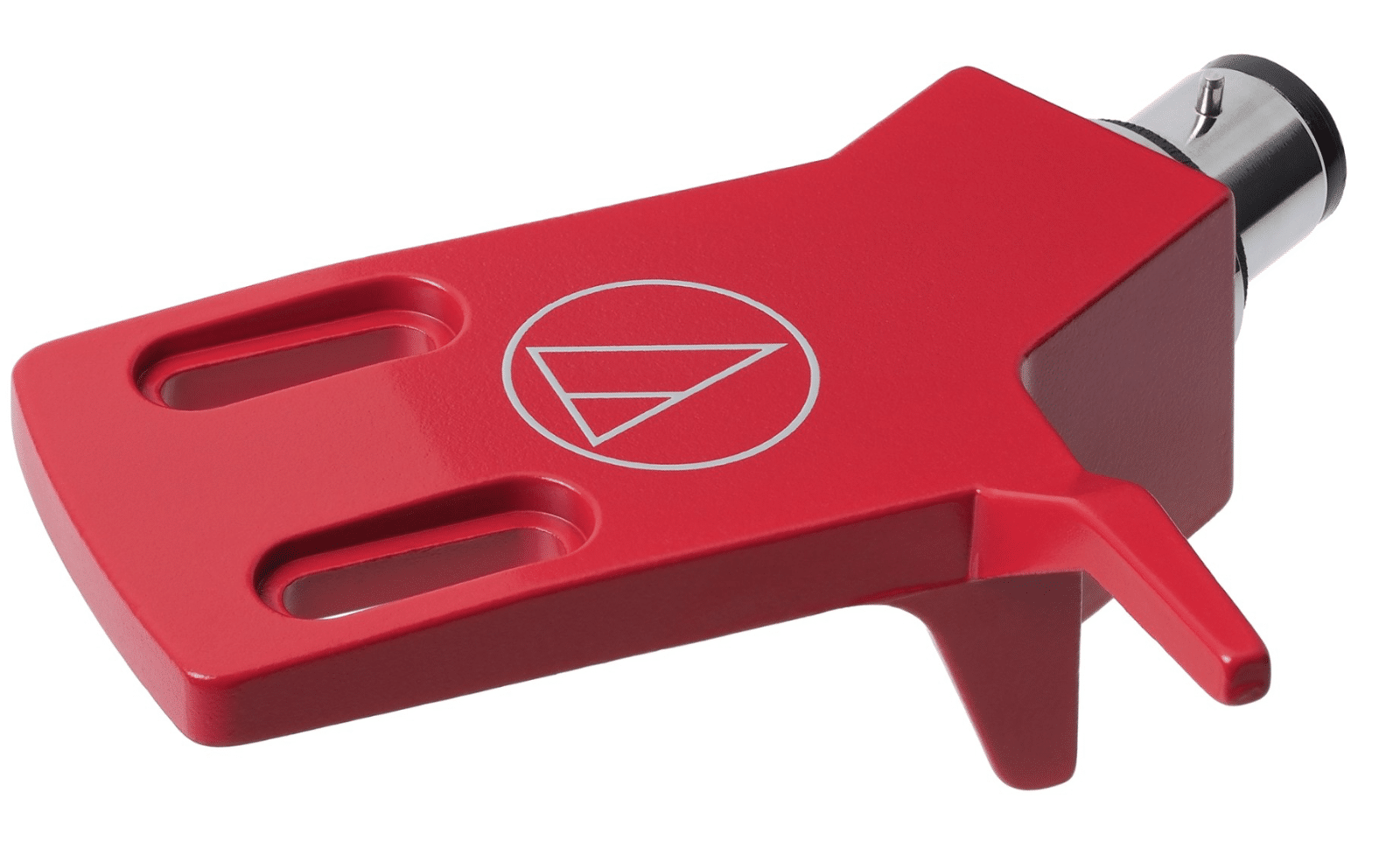
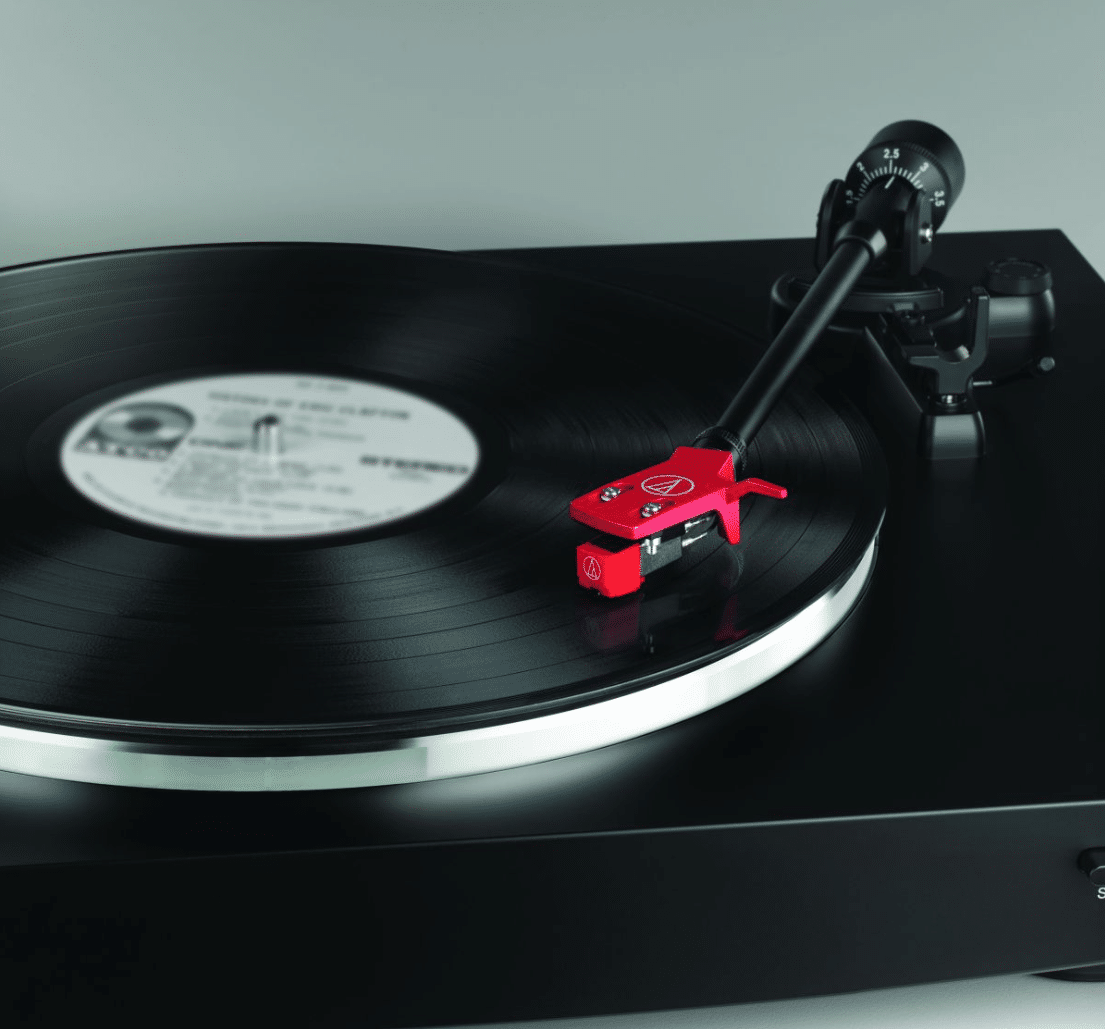

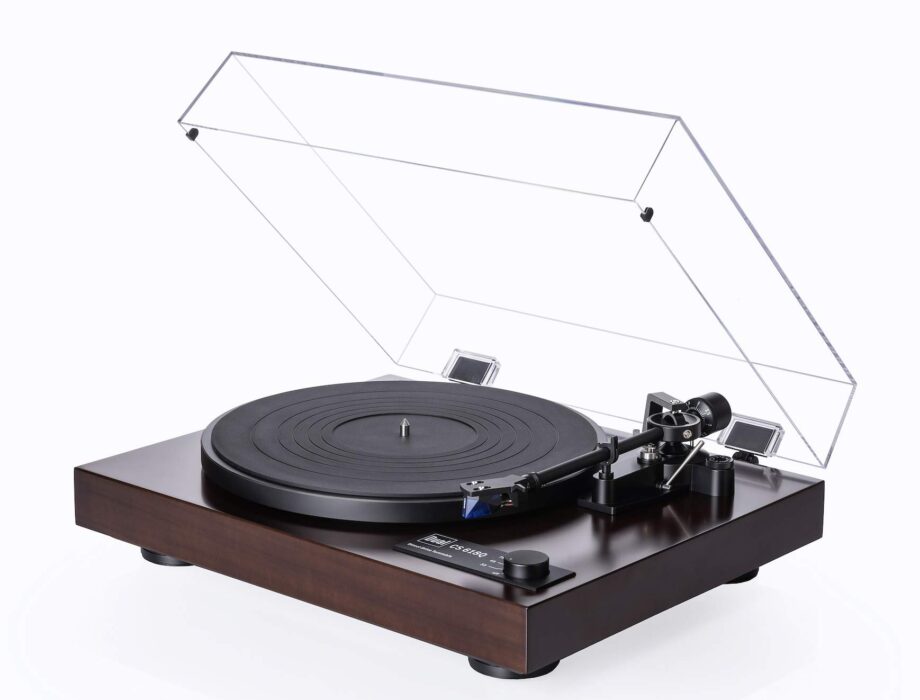
Hi Paul
I intend to buy the LP3 turntable. Would the Onkyo Xs 375 receiver be compatible with this unit? I chose this because it is compact and comes complete with speakers. This receiver may need a pre amp. Is this built into the LP3?
Hi David – is that the CS-375? If so, that should be fine. The LP3 has a phono (i.e. pre) amp built into its own chassis so you only need to plug the turntable into the Onkyo and you’re off! 🙂 Read the installation instructions of the LP3 carefully first, though.
Thanks Paul
As you may have guessed I am a complete novice I this field. Your reply is much appreciated.
Not a problem David and don’t be concerned about the novice thing. We all start somewhere 🙂
I have been looking at different websites, article, personal viewpoints on turntables and I am frustrated with the one that say it good and another says it isn’t. I have a limited budget of $300. I have an Onkyo TR-NX809 receiver with phono connections built in. So, I thought I did not need to have a phono stage included with the turntable??? Also, I was looking for something semi-to fully automatic or at least stop when the record has ended playing. I have looked at the Fluance 81, Pro-ject Essential, Denon 300AT-LP3. Was leaning toward the AT-LP3 but now I am not so sure because of the Lenco 3808 you mentioned. Plus, I went to Audio Technica to look up the specs on the AT-LP3 and it has pre amp built in and the cartridge for the LP3 (AT91R) and the website says it has been discontinued?? I just wanted to play my records I haven’t played in over 20 years. I probably will never need Rega Planar 3 or a Fluance 85 turntable. So any suggestions for a guy just wanting to be able to occasionally listen to his old vinyl records?
Thanks
Hi Jeff – many thanks for your question. OK, let’s address this phono malarky first. When you put a phono amplifier in a chassis, whether that chassis be a turntable or an amplifier, then you risk electronic contamination from adjacent gear. It’s a sort of high frequency noise which masks sound quality. I’m talking the delicate stuff here. But you’d rather hear that, right? So, if sound quality is paramount, the best option is to buy an external phono amplifier because you isolate that part from everything else and electronic contamination is now basically zero – in that area at least. Also, built-in phono amps are built to a price…a low price. So the quality is never as good as an external model.
Now, internally fitted phono amps are great if you want to save money, space, faffing with cables and all of that kinda stuff. So internal models have their place in the world. The worst place to put one is in a turntable because a turntable is a sensitive piece of engineering. This is where the delicate stylus is trying to grab your music, after all (although turntables with built in phono amps can often connect to external phono amps too – the Lenco is one example of that and that improves sound quality). A better place is that built-in model in your amplifier.
So that’s your choice – in terms of the phono amp. Give me a shout if you’re not clear on that point. Also, tell me – before we move on to turntable – what is your priority? Sound quality? Convenience? Space issues (i.e. you don’t have much footprint space for your hi-fi)? Money? Also, when looking at a turntable, what’s your budget?
Hi Paul,
I have purchased an LP3 and connected to a Q acoustics m2.
However the sound is quiet, nowhere near the volume from the I pod connected through my Pure i20 to the rca jack at the rear of the Qm2.
Why are the volume levels so different and would a pre amp solve the problem?
Many thanks,
Paul
Hi Paul – can you take a couple of pictures of how everything is connected please inc. a close up on the rear of the turntable?
Hi Paul,
Thanks for your reply.
I will forward the photos as requested.
Hi Paul
Can you show me how everything is connected up ‘live’ at the rear of the Soundbar please? That is, what cables you’ve got in what sockets. While you’re doing that, a few questions. Have you/do you accidentally engage the Mute at any time? Please check. Do you select the correct Source via the remote? Please check that too. IF it’s the wring source, you may only be hearing your turntable leaking across the Source selector. Is the volume up on the Soundbar? It’s possible that other remotes are over-riding the volume, please check any satellite/cable remotes and tweak the volume on there too. Please confirm that cartridge type/mode/number used on your turntable.
Hi Paul,
Thank you for your reply.
Since yesterday, I have telephoned Audio Technica who were very helpful and they feel that the turntable line input switch may be faulty.
They have arranged for Richer Sounds in Southampton to replace the LP3.
I will keep you updated.
In the meantime many thanks for all your kind help.
Paul
Aha! Glad you found a possible reason, Paul. I didn’t want to mention that until other avenues had been investigated first because a faulty anything is not what you want. I hope all ends well on this score. Please let me know how you get on and, if you still experience issues, I’m here to help 🙂
Hi Paul,
Further to our correspondence regarding my LP3 and QM2.
Richer Sounds tested the unit and found no fault.
So, I purchased connectors to attach to an Audioquest Tower 3.5 to RCA copper cable and input to the jack input on the Q Acoustic M2… et voila – success.
The volume is now perfect on all the 4 options on the M2.
I have changed the stylus for an AT VM95E and added a Rega turntable mat and I am now a happy bunny.
Thank you for all your kind assistance.
Hurrah! Glad it all worked out for you and thanks for the feedback. You never know, you might help someone else in the future. Thanks.
Hi Paul! Thanks for this review and the tips. I bought an LP3 a month ago and I upgraded the default cartridge to a humble elliptical AT-VM95E. I almost fell off my chair, the improvement is that big. I don‚Äôt understand why they ship this TT with the cartridge they do… okay, I understand but still üòÄ
My pleasure, gerdez – I think it’s done because conical tips are cheaper so they can keep the price lower. You did the right thing by upgrading so thumbs up!
Hi!
What do you think is it worth getting LP-3 in 2020? Cause I want a fully automatic turntable or at least with auto stop option.
Now I have AT-LP60XBT, read lots of negative comments that it will damage the records, so now I am very frustrated and don’t even play my new records. What do you think about lp-60x? Will my records wear out fast fith it?
Thank you!
H Jess – no, the turntable won’t destroy your vinyl. Let’s not forget that you have an Audio-Technica cartridge fitted to the 60. It’s a standard model with a spherical tip that might lack a touch of detail and insight but is generally kind to grooves and is very forgiving in terms of tracking (poor tracking can cause issues). The cart design is also pretty decent. Rega uses a variant of it on its Planar 1.
And sure, the build quality and inherent sound quality might not be amazing but it’s not devastating.
I haven’t actually used this deck in anger and it’s been a while since I examined one (the last time was at a hi-fi show) so tell me, can you change the tracking force? That is, is there a movable weight at the rear of the arm? Can something back there be moved or tweaked at all? Reducing that tracking force to around 2.5g would help the sound, opening up the midrange. I think it might be around 3.3-3.5g right now?
Of course, you can improve the sound, sure. And there’s semi-automatics on the market too, if you need them. I can recommend semi-automatics right up to ¬£1,000 so, if you’re up for an upgrade, give me a shout and a budget figure. For now though, don’t worry about the damage thing.
No you can’t change the tracking force on LP-60X. There is no movable weight just plastic, and yes it says that tracking force is 3.5g which is high as I understand, that’s why I have this fear of playing records on lp-60x. I read on forums people recommend not to play one record more than 1-2 a week.
So that’s why I’ve been trying to find smth with moving tonearm.
Unfortunatelly my budget is like up to £300. Maybe there is smth worth upgrading lol
I’ve been looking at this LP-3 but read that it has some problems with the speed.
Hi Jess – as I say, don’t worry, you’ll be fine. Don’t upgrade on the damage thing. Only consider an upgrade if you seek improved sonics. And I have had no experience with speed issues on the LP3. That said, rather than a LP3, though, I’d go for this better option. It is semi automatic: https://theaudiophileman.com/rt81-turntable-review-fluance/
Hi Paul,
Appreciate your article. It’s what helped me pick this LP3 turntable as the first one I’ve ever had! I have some questions if you don’t mind.
1) I purchased two speakers from Jamo called the S-803. https://www.jamo.com/products/s-803. These aren’t wireless or bluetooth as you can probably tell. I won’t hear any sound unless I have an amplifier, right? I’m wondering what amplifier you’d recommend at this point? I realize spending a ton of money on an amp with an intro level turntable isn’t necessary, so, I’m good with anything around or under $100.00 I live in the United States if that makes a difference on what type of amps are available.
2) Maybe to avoid buying an amplifier, I am wondering if I can use a speaker/karaoke system that I already own called the LG XBOOM OK55. It’s currently serving as the speaker for the turntable.(https://www.lg.com/us/home-audio/lg-OK55-stereo-shelf-systems) . Do you know of any way that I could still use this along with those Jamo speakers?
Appreciate any help/advice you could give. Thank you!
-Rick
Hi Rick, thanks for the question and, hmmm, tricky… Yes, you need an amplifier to get going but $100 is a bit on the low side for a decent amp. If you’re happy to do this, it might be an idea to scour eBay or a similar site to look for a cheap Cambridge Topaz amplifier. These have just been discontinued and so new/old stock might be flowing around at a good price. You might want to check local hifi stores for the same, you might be able to grab one at a good price. The Topaz is a no frills, basic amp but it has a decent spec, comes from a good name and works well.
Thank you for your review. I feel moved to comment though, because I think you’ve underestimated the significance of this turntable greatly and felt your readers might find my input useful.
I have 3 turntables – a Linn Sondek LP12 with Ittok and Adikt, a Rega Planar 2 (RB220), and a AT LP3. I bought the LP3 for the convenience of an automatic turntable and its ability to return the arm when a record has finished (in case I was working/on a call etc etc). With the Linn I use Naim amplifiers, a Schiit Mani phone stage and Focal Aria speakers. With the LP3 (and P2) I use a Denon M41 DAB mini system, a Project phono box E, and Cambridge Audio S30 sirocco speakers.
I didn’t buy the LP3 expecting anything like ‘audiophile excellence’.
HOW WRONG WAS I?
Of course I can hear a difference between LP12 and LP3. But it’s not huge. And as for the Rega Planar 2, I’d be happy to sell it frankly – a very limited deck with an arm that prohibits tinkering with anti-skate or makes cartridge replacement unnecessarily challenging. And Rega’s own cartridges are pretty ordinary at best, unless you fork out ¬£265 for the Exact (which simply isn’t worth it with a turntable like the Planar 2 in my view). Records regularly skip DESPITE CORRECT SETTINGS (as far as one can set anything with this extremely limited TT).
Anyway, to give the LP3 a 6/10 rating is grossly underestimating its quality, usefulness, ease of use, ease of upgrading and, above all, sound quality which I find to be truly excellent, and surprisingly so. I love using it.
I have replaced the AT91R with an AT95EX (excellent) and most recently, to try it out, the AT VM95C, which is SUPERB (yes, the conical stylus). Tremendous musicality and subconscious toe-tapping aplenty.
PLEASE have another listen – this inexpensive turntable is absolutely FANTASTIC in so many ways.
Thank you.
Cheers!
Graham.
I stand by my review and the thoughts within Graham but, nevertheless, we all have different ears and your views are just as valid, of course and I thank you for stating the LP3 case.
You are a gentleman, and I thoroughly enjoy reading (and watching) your reviews. Thank you.
That’s very nice of you, Graham. Thank you.
Thanks for the great review Paul! I have an lp3 with nad c320bee and AE301 speakers. I have upgraded my cartridge with AT vm95e. Lately i have started to notice there’s a distortion on 1 or 2 last track of majority of of the album (especially vocal). Is this whats called inner groove distortion? I have realign my cartridge and its sound better, but theres still distortion on the last track. If its true this is an inner groove distortion, how common are these inexpensive entry level turntable to have this problem? Would an external phono preamp help to fix inner groove distortion? I see you recommend project phono box preamp, but i really consider rega fono mini a2d, whats your thought on this?
Hi Allen – well, the LP3 is not the best equipped design to handle distortion, to be honest. It is a basic build. I wouldnt throw sticking plasters at it, I’d live with the issue until you’re able to upgrade your turntable.
Hello! I have recently purchased the lp3 as a total novice to the world of vinyl. I am replacing a Crosley suitcase player (yikes). I just wondered, if you had any recommendations for speakers for this turntable? as i am struggling to find suggestions. Also, do i have to buy an amp aswell? or will the built in one mean i will get sound from just the turntable and speakers? Thanks.
Hi Megan – yikes, indeed 🙂 You will need an amplifier of some sort, yes. This can either be a standalone separate box or there are powered speakers out there. These feature the amplifier stuffed inside the speaker. The separate amp offers the better sound but the powered speaker gives you a smaller footprint and convenience. So you’re looking at an amplifier and speakers plus cabling. Alternatively, you need a pair of powered speakers. Have a think about that and get back to me – I’ll need a budget figure from you too.